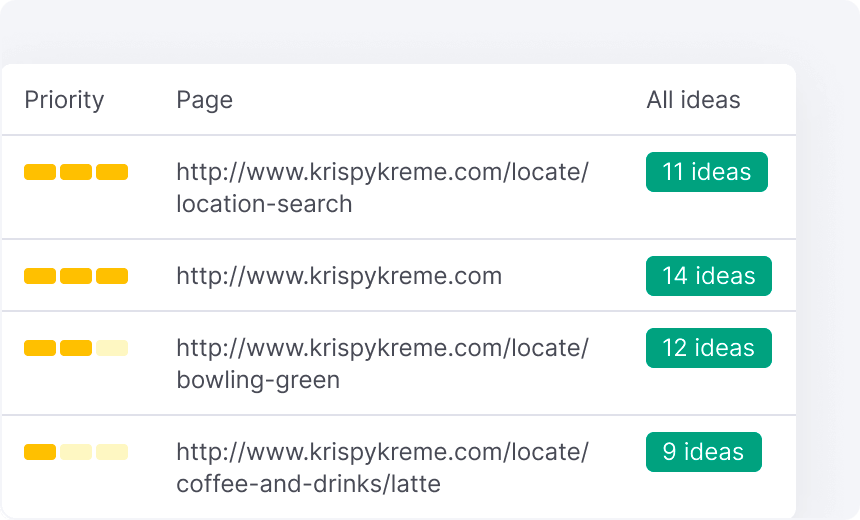In-Depth Evaluation: What Is Not Considered a Default Medium in Google Analytics
In-Depth Evaluation: What Is Not Considered a Default Medium in Google Analytics
Blog Article
Thinking Outside package: Leveraging Non-traditional Mediums to Optimize Google Analytics Performance
In the realm of electronic marketing, the mission for boosted Google Analytics performance has actually ended up being a tactical crucial for businesses looking for to refine their on the internet existence. Conventional techniques commonly fall short in recording the complete range of customer interactions and actions. By discovering unusual mediums as opportunities of data collection, a brand-new realm of possibilities emerges. These uncharted areas supply a wide range of untapped insights that could possibly change the method we comprehend and optimize our electronic methods.
One-of-a-kind Information Sources

CRM systems, for example, can offer insights into private customer interactions, acquisition history, and preferences, which can be incorporated with Google Analytics information to create more tailored marketing strategies. Social media site platforms offer useful data on individual demographics, rate of interests, and interaction metrics, permitting organizations to assess the performance of their social media sites campaigns and maximize content for far better performance. Email advertising and marketing data, consisting of open rates, click-through prices, and conversion metrics, can likewise be leveraged to track customer interaction and actions beyond web site communications recorded by Google Analytics. By leveraging these unique data sources, companies can fine-tune their methods, boost targeting initiatives, and enhance total Google Analytics performance.
Social Network Insights

Furthermore, social networks analytics tools enable organizations to track vital performance indicators, display project efficiency, and determine the effect of their on-line tasks. Recognizing the demographics of fans, recognizing prominent content styles, and assessing interaction degrees can help organizations tailor their advertising and marketing methods for far better outcomes.
Offline Advertising Integration
Incorporating offline marketing techniques with electronic analytics can boost overall project performance and provide a more comprehensive understanding of consumer actions. what is not considered a default medium in google analytics. By bridging the void between online and offline initiatives, organizations can track the impact of typical marketing networks such as print ads, TV commercials, direct-mail advertising, and events on their on the internet visibility

Moreover, executing phone call radar for offline advertising activities allows organizations to record important data on consumer inquiries produced through published materials or advertisements (what is not considered a default medium in google analytics). By evaluating call information alongside on-line metrics in Google Analytics, organizations can obtain much deeper understandings right into the customer journey and maximize advertising and marketing methods for better efficiency across all channels
IoT and Wearable Modern Technology
Utilizing IoT and wearable technology in electronic analytics can transform data collection and customer understandings for businesses looking for a much deeper understanding of individual habits patterns. These cutting-edge modern technologies offer a smooth means to collect real-time data from numerous touchpoints. IoT tools can track user communications with services or products, providing useful information on usage patterns and choices. Wearable technology, such as smartwatches or fitness trackers, can offer understandings right into customer tasks, wellness metrics, and also place information.
Gamification Approaches
The implementation of gamification approaches in digital analytics offers an innovative method to improving individual involvement and driving actionable insights for organizations. By integrating game-like components such as points, badges, leaderboards, and awards into the analytics interface, firms can inspire customers to interact a lot more regularly and meaningfully with the data.
Gamification urges users to check out different features of the analytics platform, uncovering important insights that could have otherwise gone unnoticed. Through interactive challenges and progress tracking, users are incentivized to delve much deeper right into the data, causing increased time invested in the system and a greater chance of finding key trends or patterns.
Moreover, gamification can cultivate a feeling of competitors amongst users, stimulating them to pursue greater efficiency and interaction degrees. This competitive spirit can drive raised customer adoption rates and an extra thorough application of the analytics tools readily available. Inevitably, by leveraging gamification techniques in electronic analytics, companies can produce a more interesting and effective setting for users, resulting in more enlightened decision-making and enhanced overall efficiency.
Conclusion
Finally, leveraging non-traditional mediums such as distinct data sources, social media understandings, offline advertising integration, IoT and wearable modern technology, and gamification methods can optimize Google Analytics efficiency. By thinking outside package and checking out these alternate sources of data, organizations can obtain important understandings and enhance their general advertising techniques. It is very important for companies to continuously check out brand-new methods to collect information and analyze it in order to stay ahead in the ever-evolving electronic landscape.
By including information from resources such as client connection management (CRM) systems, social media platforms, and e-mail advertising and marketing campaigns, companies can get a more thorough understanding of their target market habits and involvement patterns. Social media platforms offer visite site valuable data on page user demographics, interests, and involvement metrics, allowing businesses to evaluate the performance of their social media projects and maximize content for far better performance. By leveraging these one-of-a-kind data sources, businesses can fine-tune their strategies, enhance targeting efforts, and boost general Google Analytics performance.
Discovering social media insights can supply services with valuable information on individual demographics, passions, and involvement metrics, enabling for educated decision-making and tactical optimization of advertising and marketing efforts. By believing outside the box and exploring these different resources of information, organizations can acquire useful understandings and enhance their overall advertising and marketing strategies.
Report this page